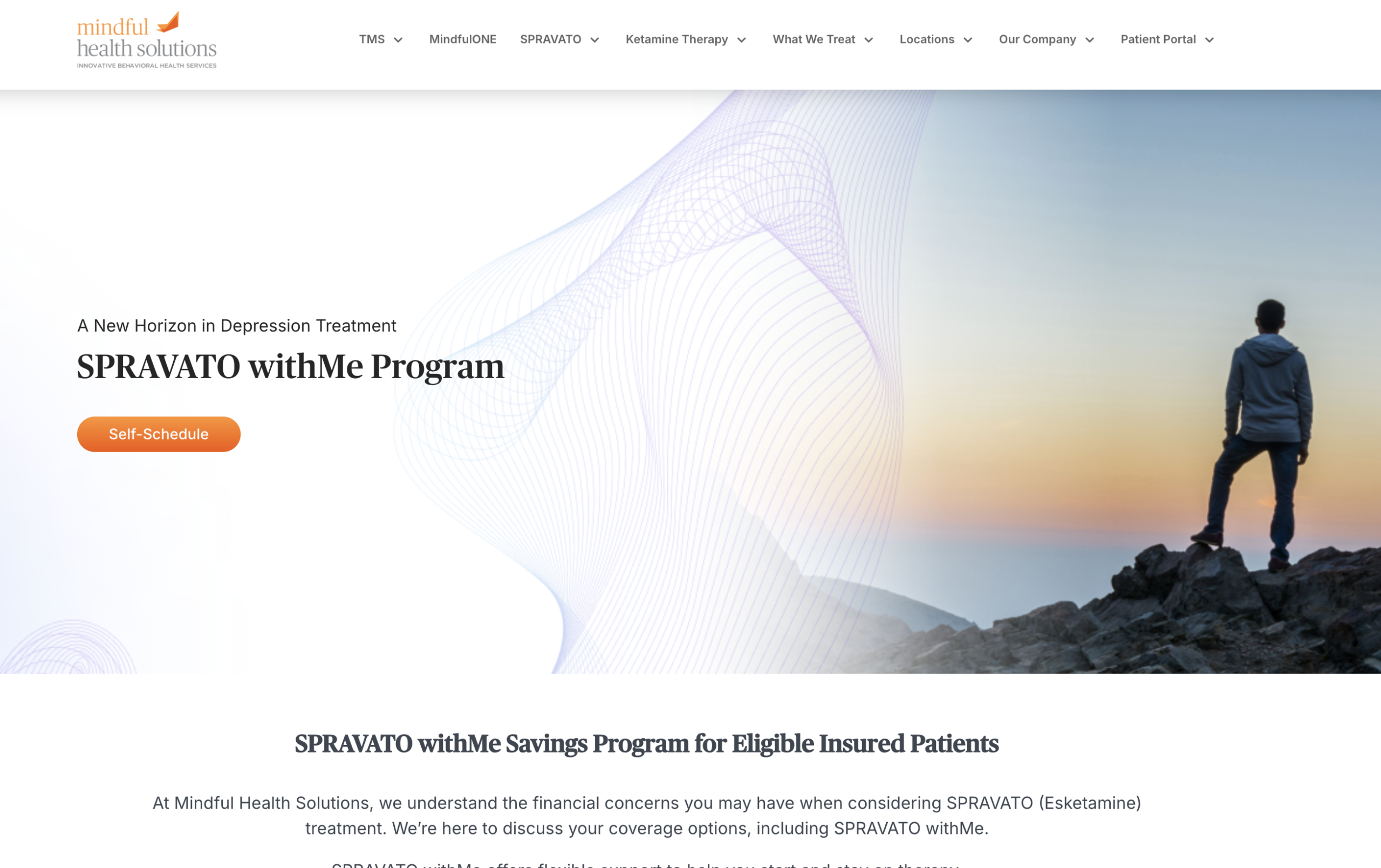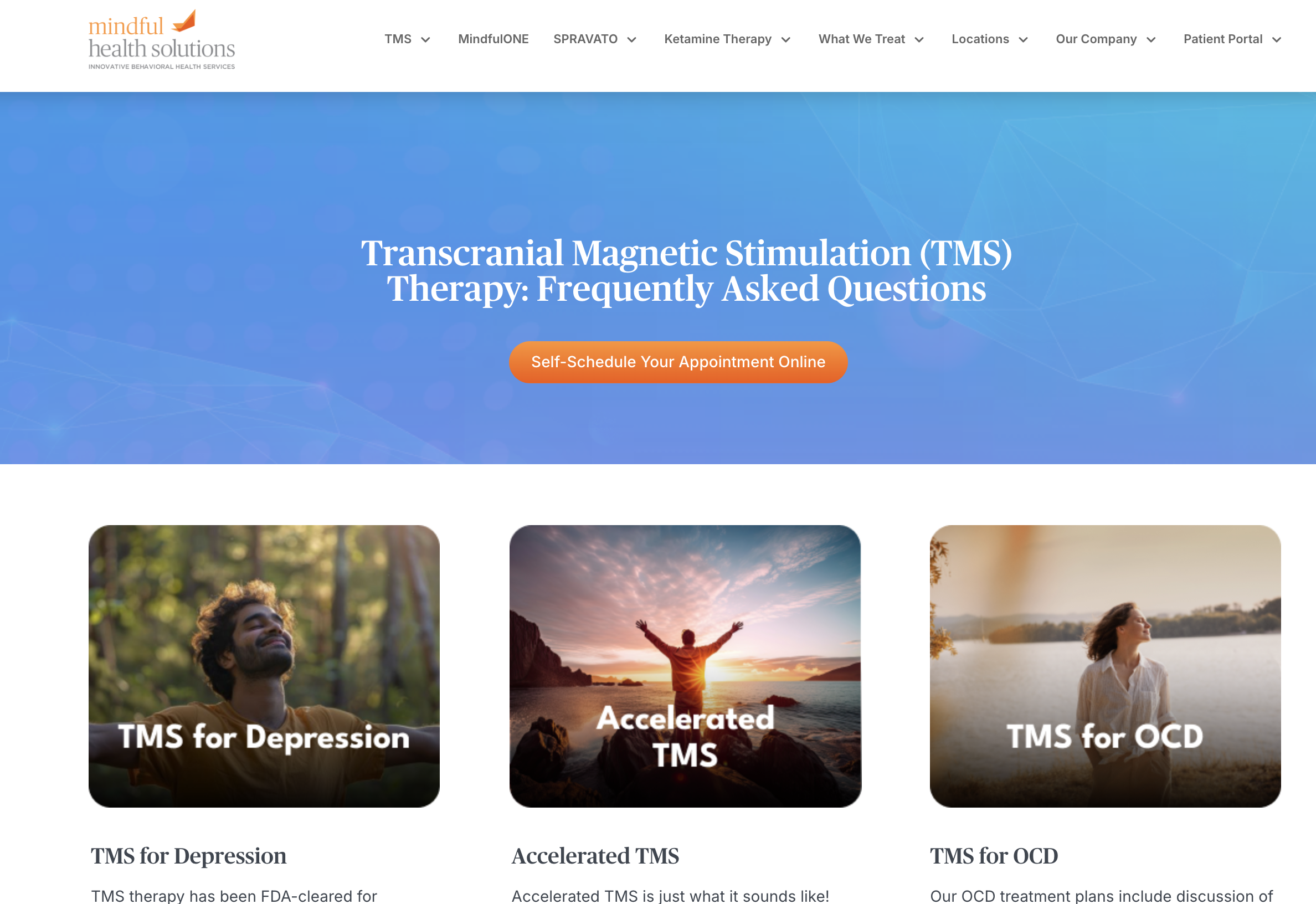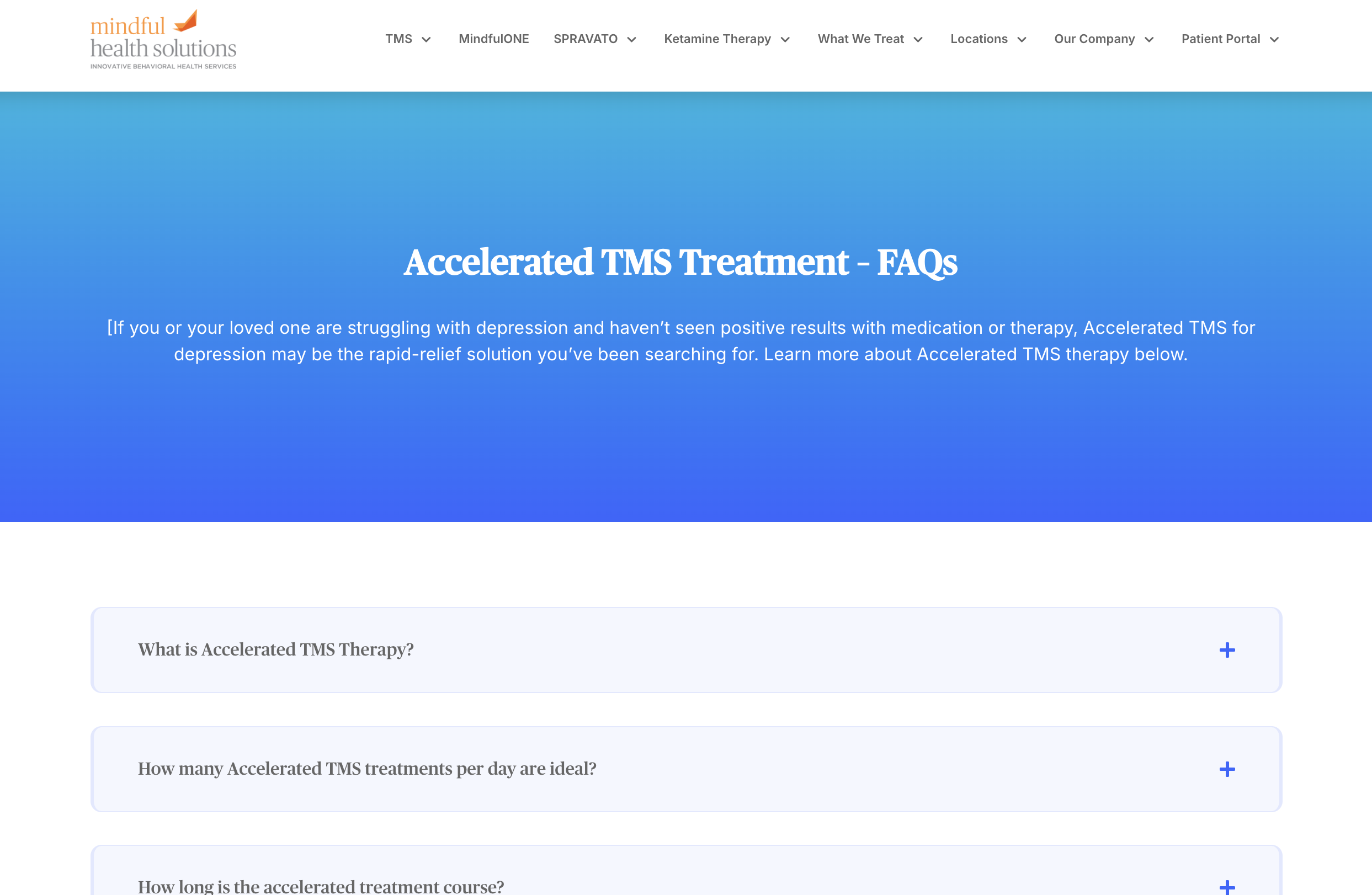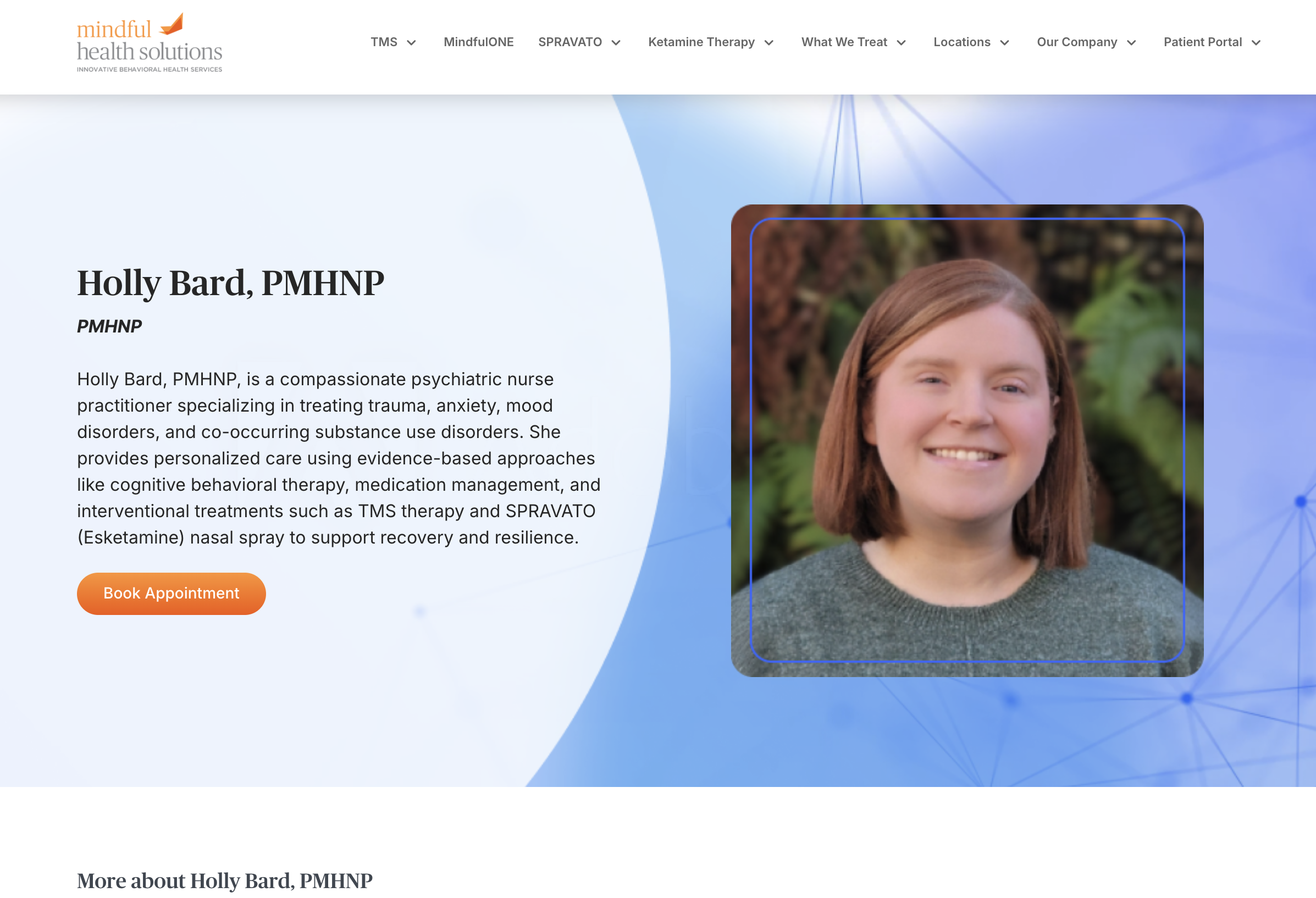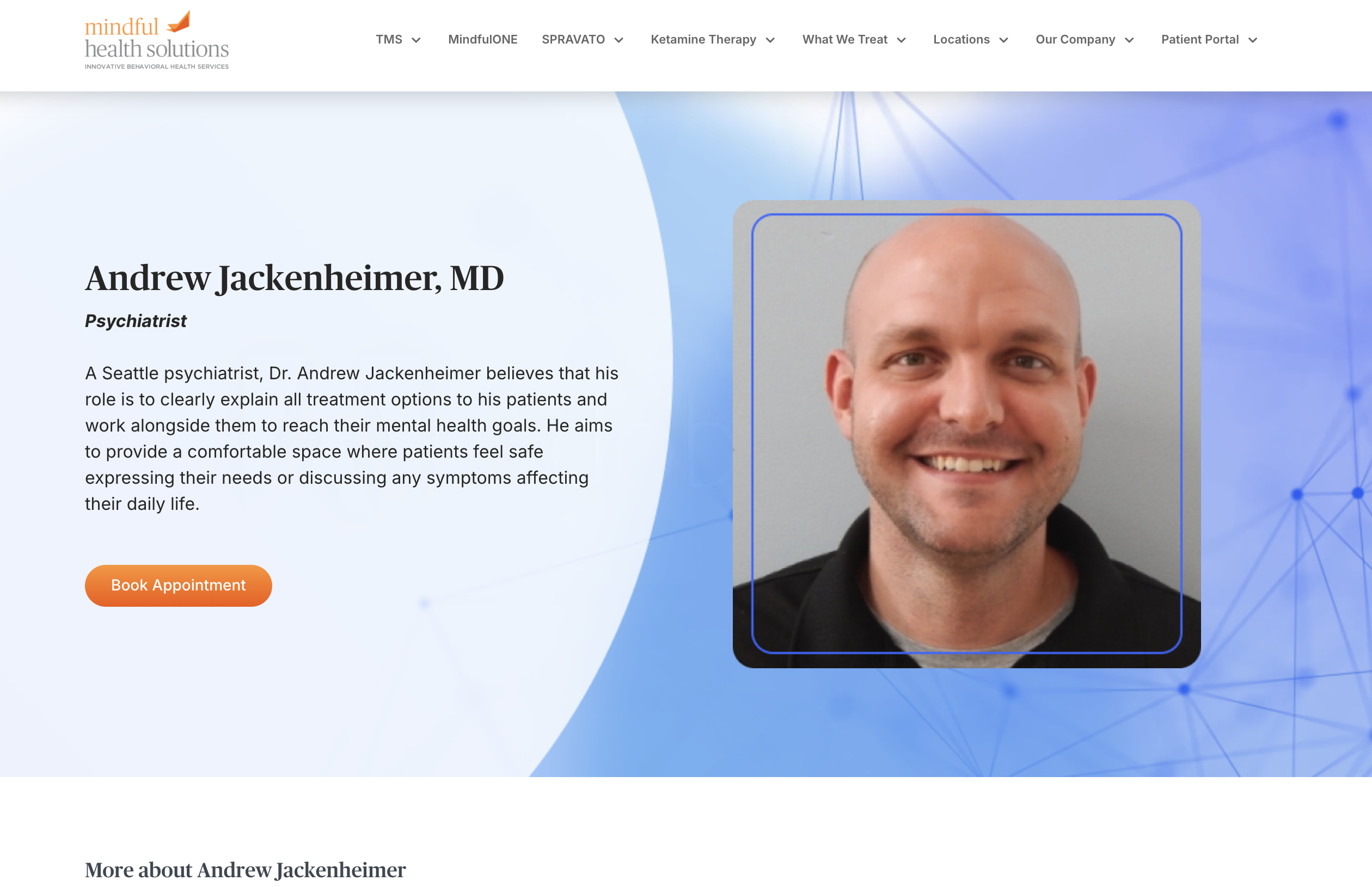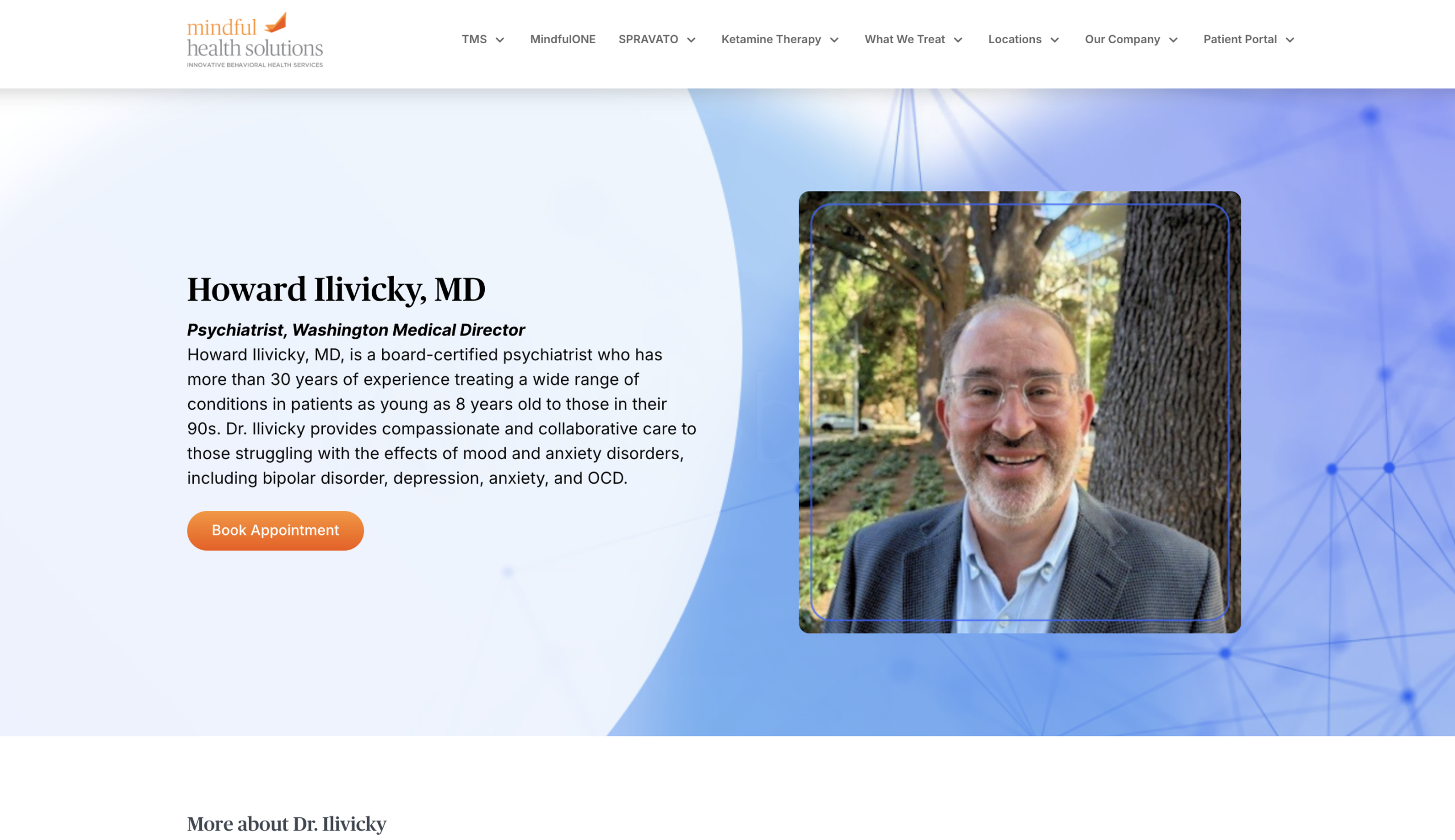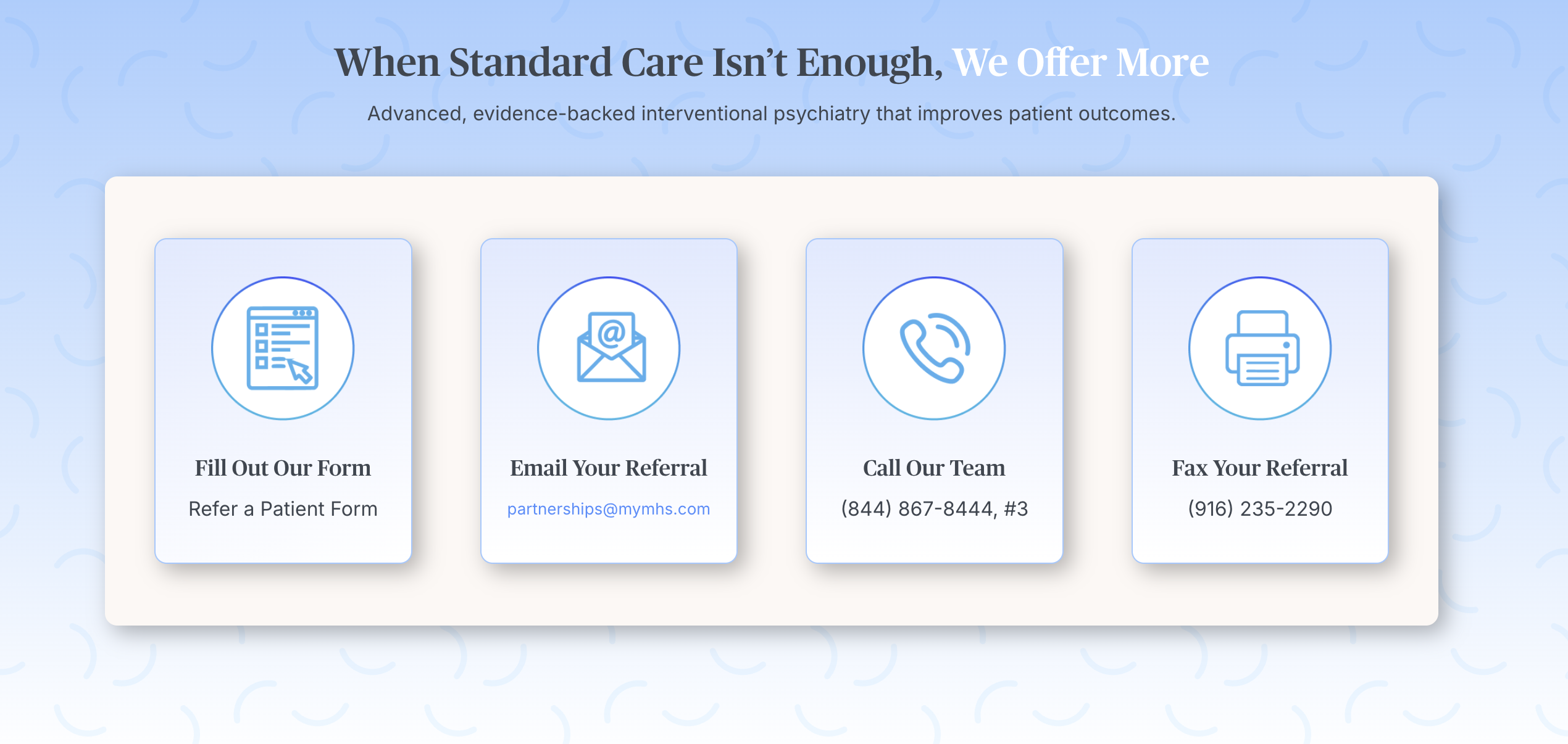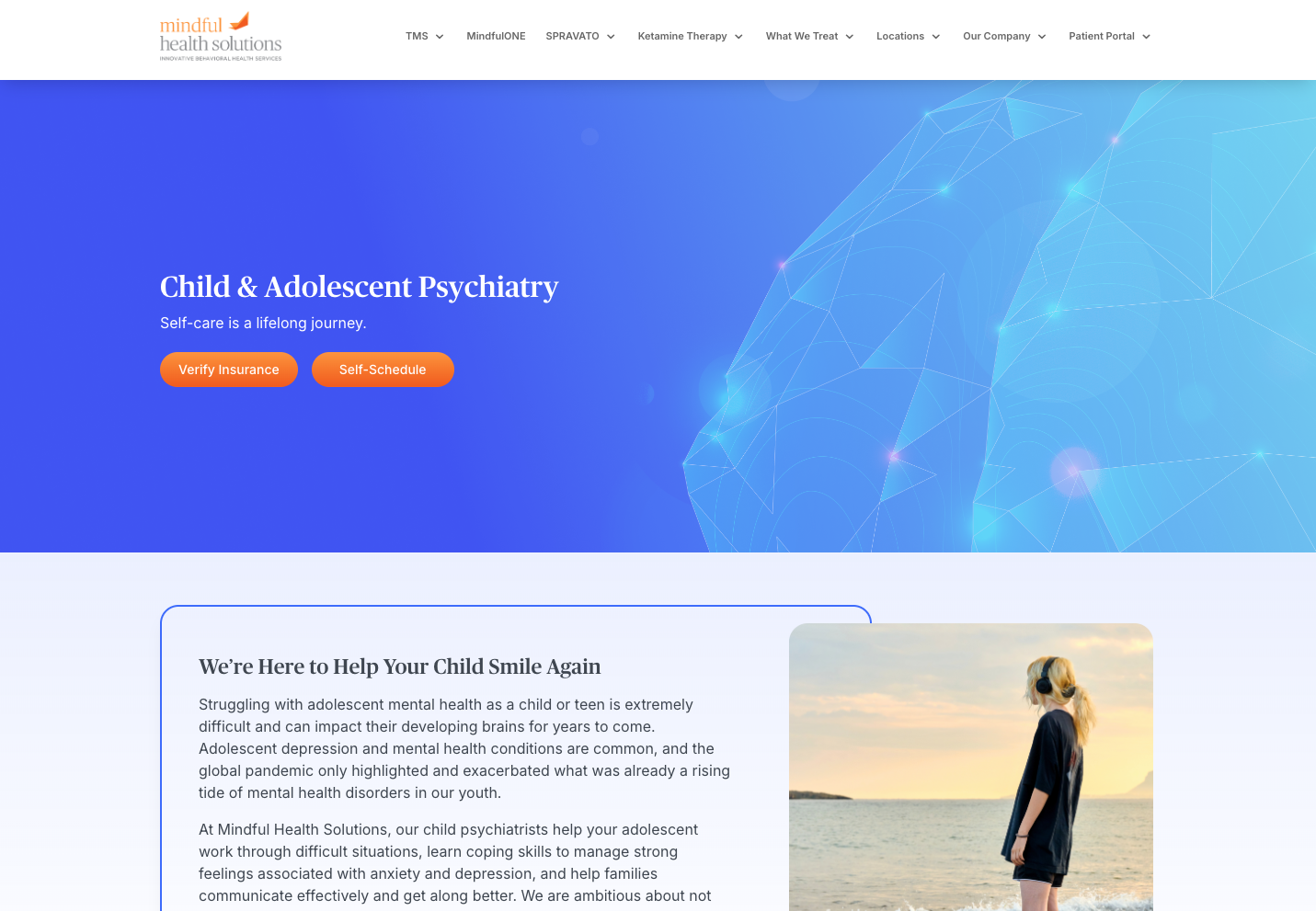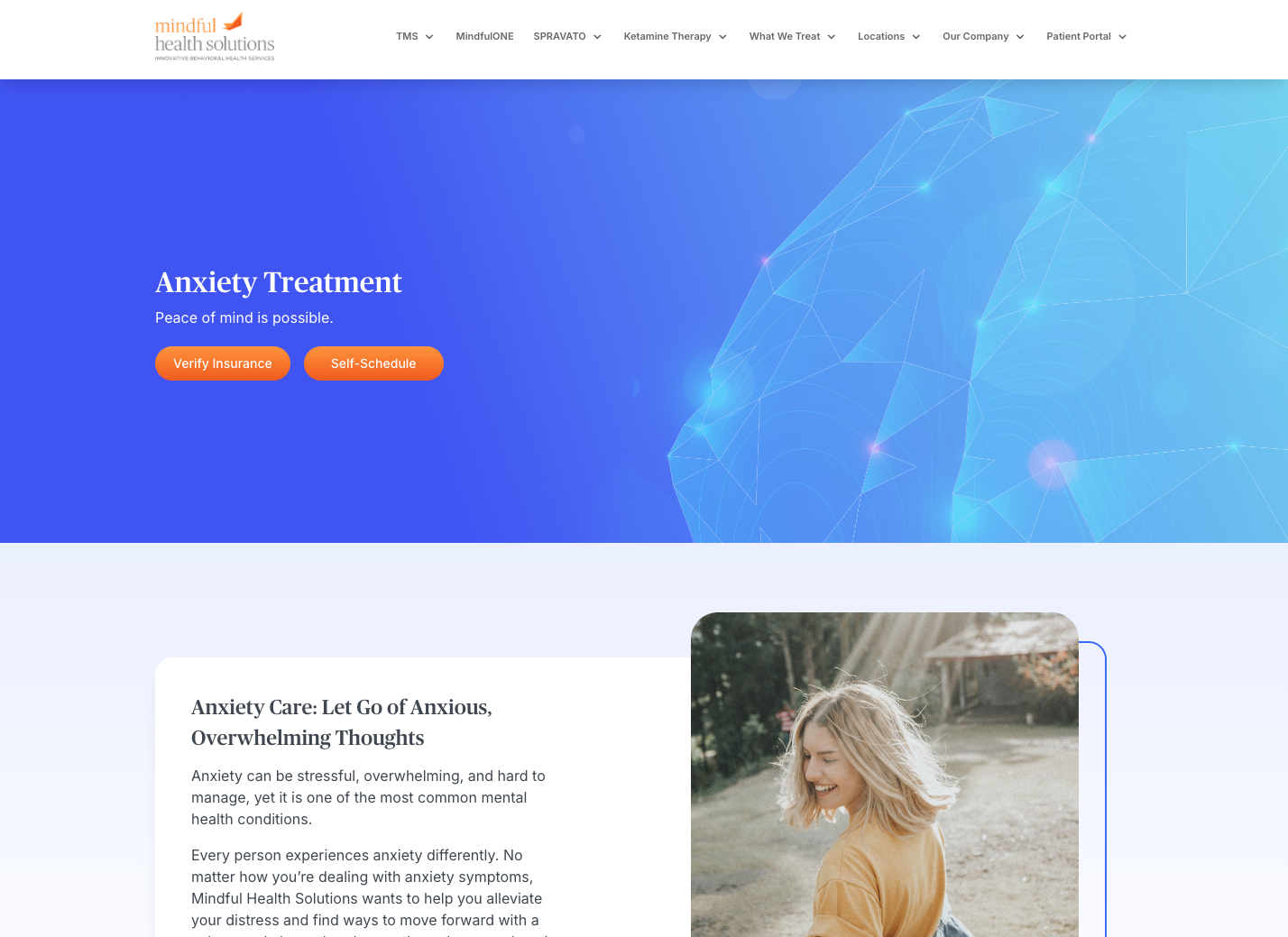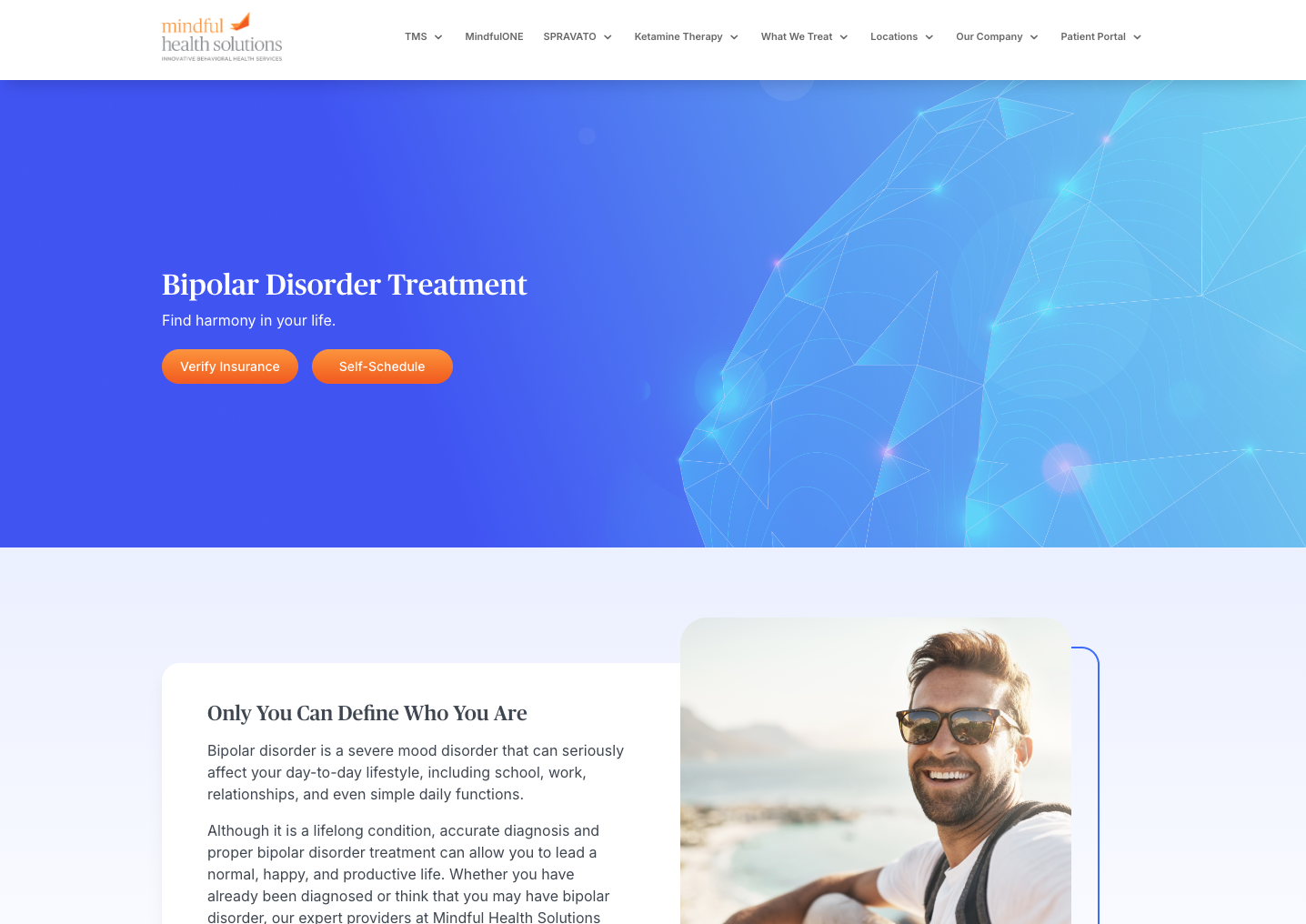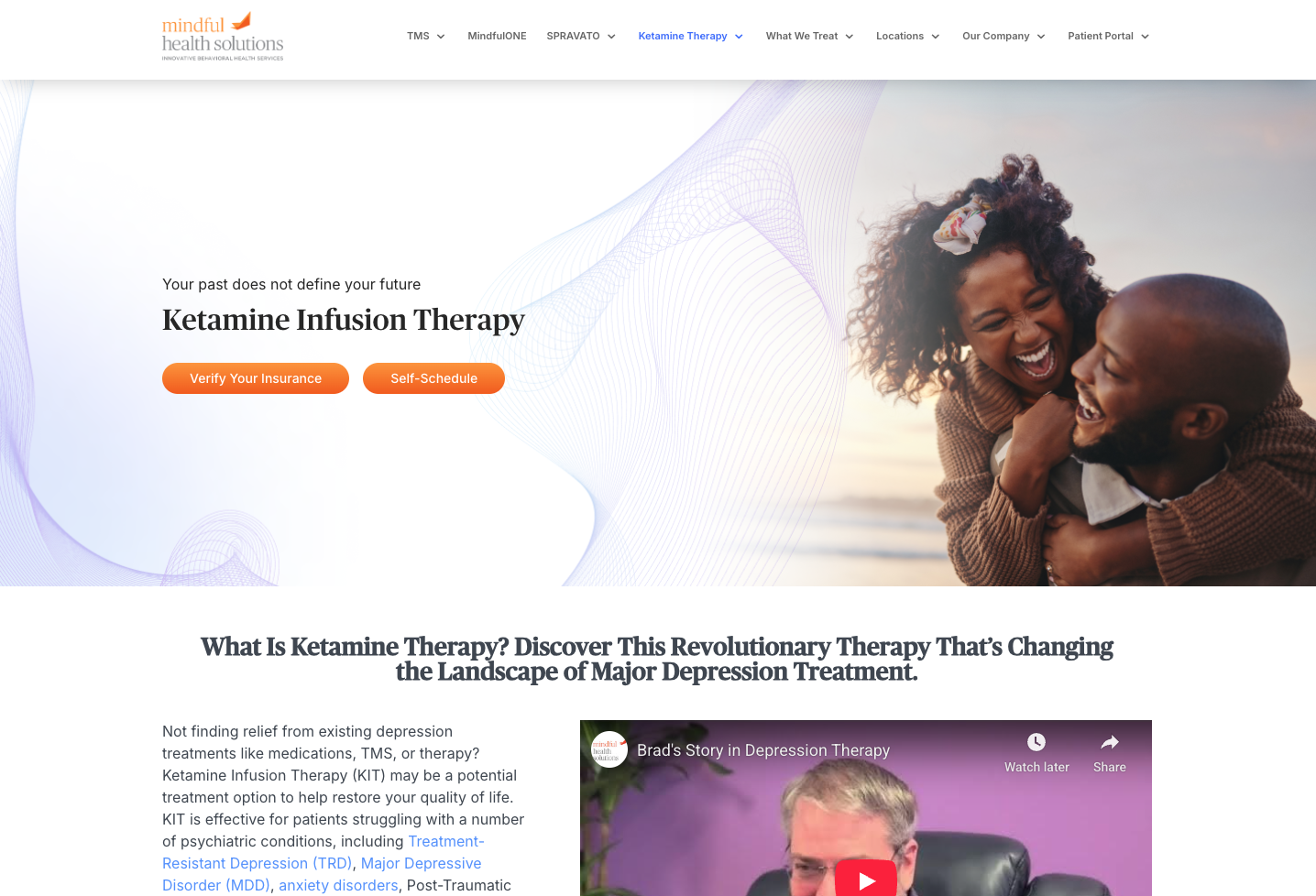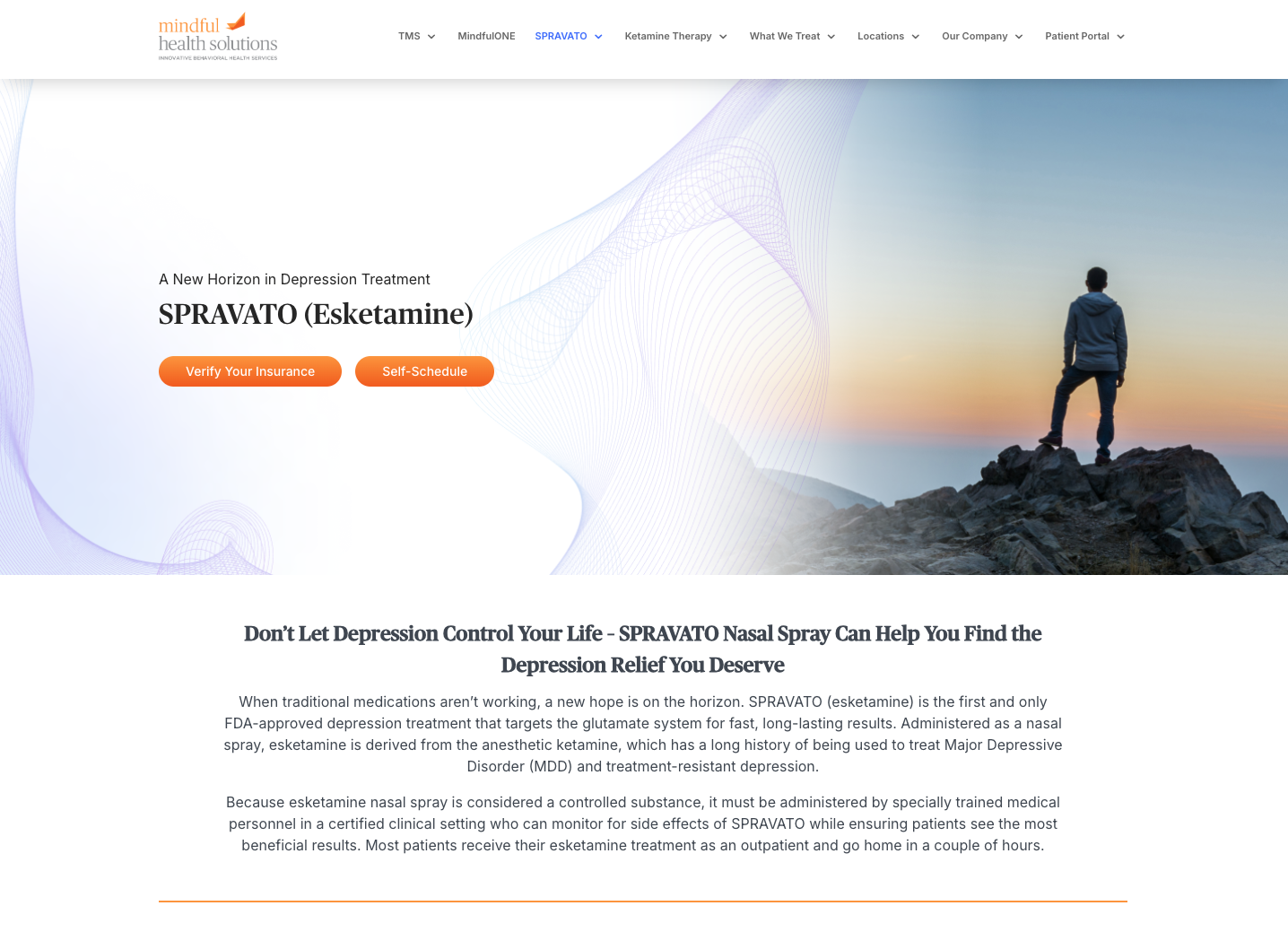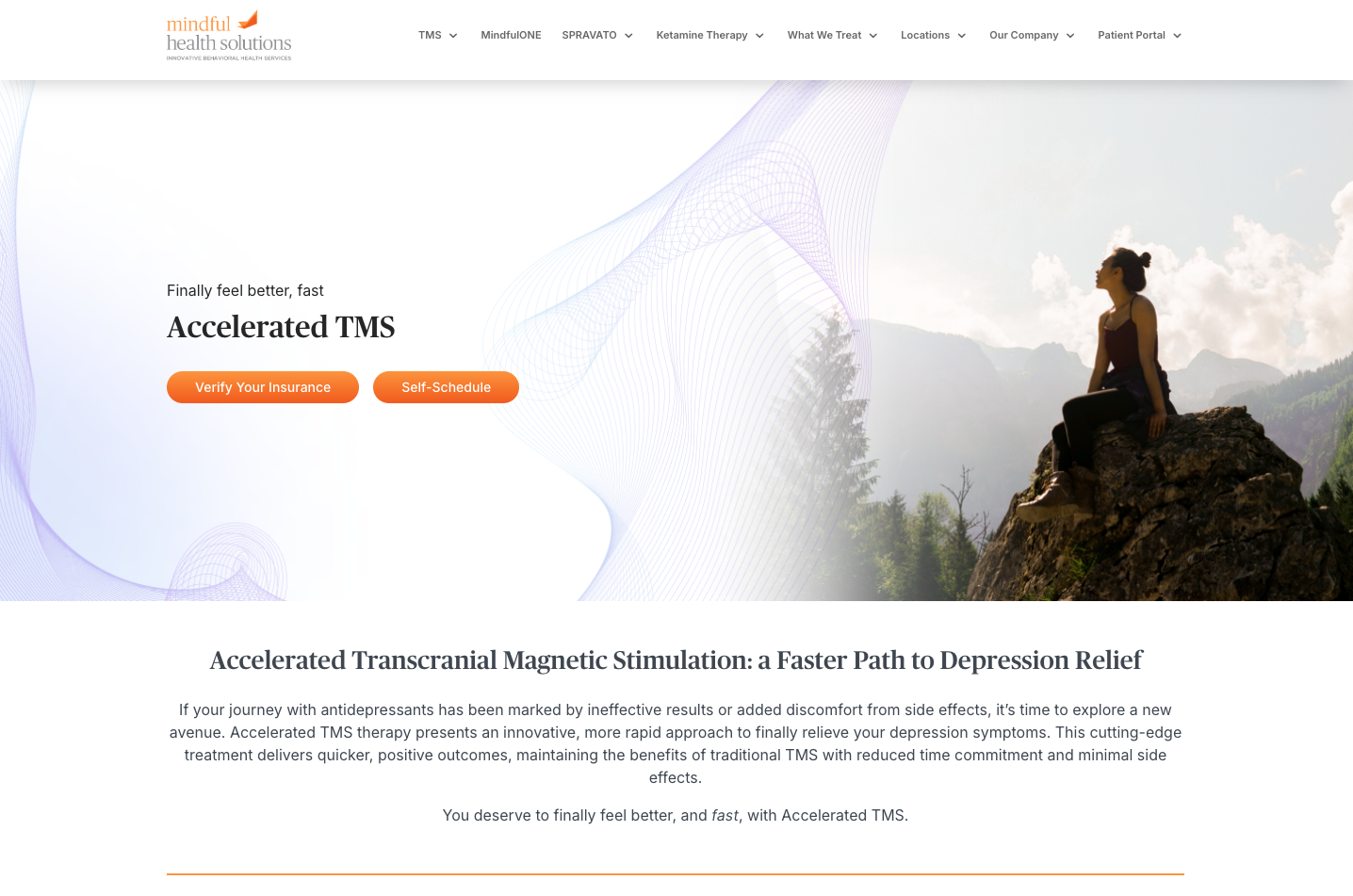TMS for Depression – FAQs
TMS has been FDA-cleared for depression since 2008, and is a safe, effective treatment that doesn’t have the side effects of many medications. During each treatment session, you sit in a comfortable chair and can listen to music, watch tv, or talk to the technician. And following treatment, you can immediately resume your regular activities. It is covered by most insurance plans, and we’ll work directly with insurances to advocate for our patients’ coverage.
What is TMS?
What Is TMS Therapy?
TMS (Transcranial Magnetic Stimulation) is a non-invasive, FDA-approved treatment for depression and other mental health conditions. It uses magnetic pulses to stimulate the brain’s prefrontal cortex, which regulates mood. Unlike medications, TMS does not travel through the bloodstream and has fewer side effects. It is a well-tolerated option for those who haven’t responded to antidepressants or prefer a drug-free treatment.
TMS is primarily used for treatment-resistant depression, but research shows it can also help with symptoms of anxiety, OCD, PTSD, migraines, and more.
How does TMS work?
TMS stimulates the prefrontal cortex, which is responsible for mood regulation. Magnetic pulses activate neurons, helping to restore neurotransmitter balance (such as serotonin and dopamine). This can relieve depression symptoms long-term, unlike antidepressants, which only work while in the bloodstream.
What happens in a session?
- You’ll sit in a comfortable chair while a TMS coil is placed on your head.
- The device sends painless magnetic pulses to stimulate brain activity.
- You can watch TV, listen to music, or talk during treatment.
- Sessions last 20–30 minutes, 5 days a week for 4–6 weeks.
- No sedation or downtime—patients can drive home and resume normal activities.
Is TMS safe, and are there any side effects of TMS?
What are the success rates of TMS?
Transcranial Magnetic Stimulation (TMS) has been shown to be more effective than antidepressants for many patients:
- 50% of patients experience a significant reduction in symptoms.
- 30–33% achieve full remission, meaning symptoms completely disappear.
- Many patients start feeling better after 2–3 weeks, with full results after 6 weeks.
Unlike antidepressants, which must be taken continuously, TMS treatments provide long-lasting relief without the side effects of medication.
Will TMS therapy affect my current medications?
TMS treatments do not directly impact medications, but as symptoms improve, some patients may reduce or discontinue antidepressants under medical supervision.
- If you’re already on medication, your provider will decide whether to continue or adjust it.
- If you’re not taking medication, TMS can be a standalone treatment or part of a combined approach.
- Each treatment plan is personalized to fit your needs.
Your provider will monitor your progress and adjust your treatment plan as needed.
How is TMS different from ECT?
ECT vs TMS – it’s important to know that these are not the same! While both TMS and ECT are brain stimulation treatments for depression, they work very differently:
- ECT uses an electrical current to induce a controlled seizure, requiring general anesthesia in a hospital. It’s typically used for severe, life-threatening depression and can cause memory loss.
- TMS uses magnetic fields to stimulate a specific brain area without inducing seizures or requiring anesthesia. It has minimal side effects, and patients can resume daily activities immediately.
Discover a new era of TMS with Mindful Health Solutions. TMS is a non-invasive outpatient option with fewer risks, making it a preferred choice for many individuals.
How can I tell if I’m depressed?
Depression can be debilitating, and early diagnosis is important. Ask yourself:
- Has my sleep, appetite, or energy changed?
- Am I avoiding social interactions or losing interest in hobbies?
- Do I feel agitated, tearful, or hopeless most days?
- Have I engaged in risky behaviors or self-harm?
If these resonate with you, consider taking a Depression Screening and seeking professional help. Early treatment increases the chances of remission and long-term well-being.
Is TMS covered by insurance?
Yes! Most major insurances cover TMS, and we’ll work directly with your insurance provider on your behalf to help you get covered.

